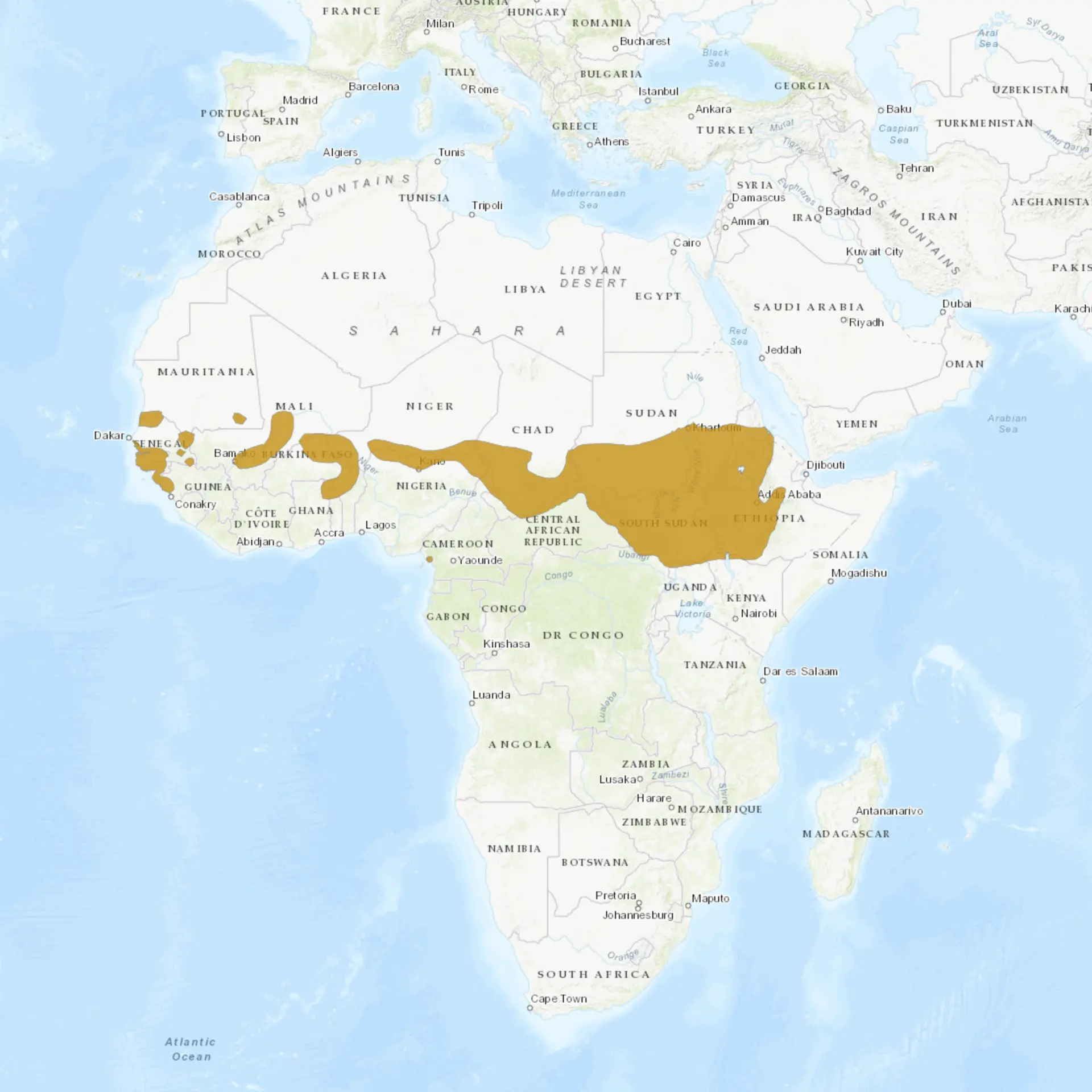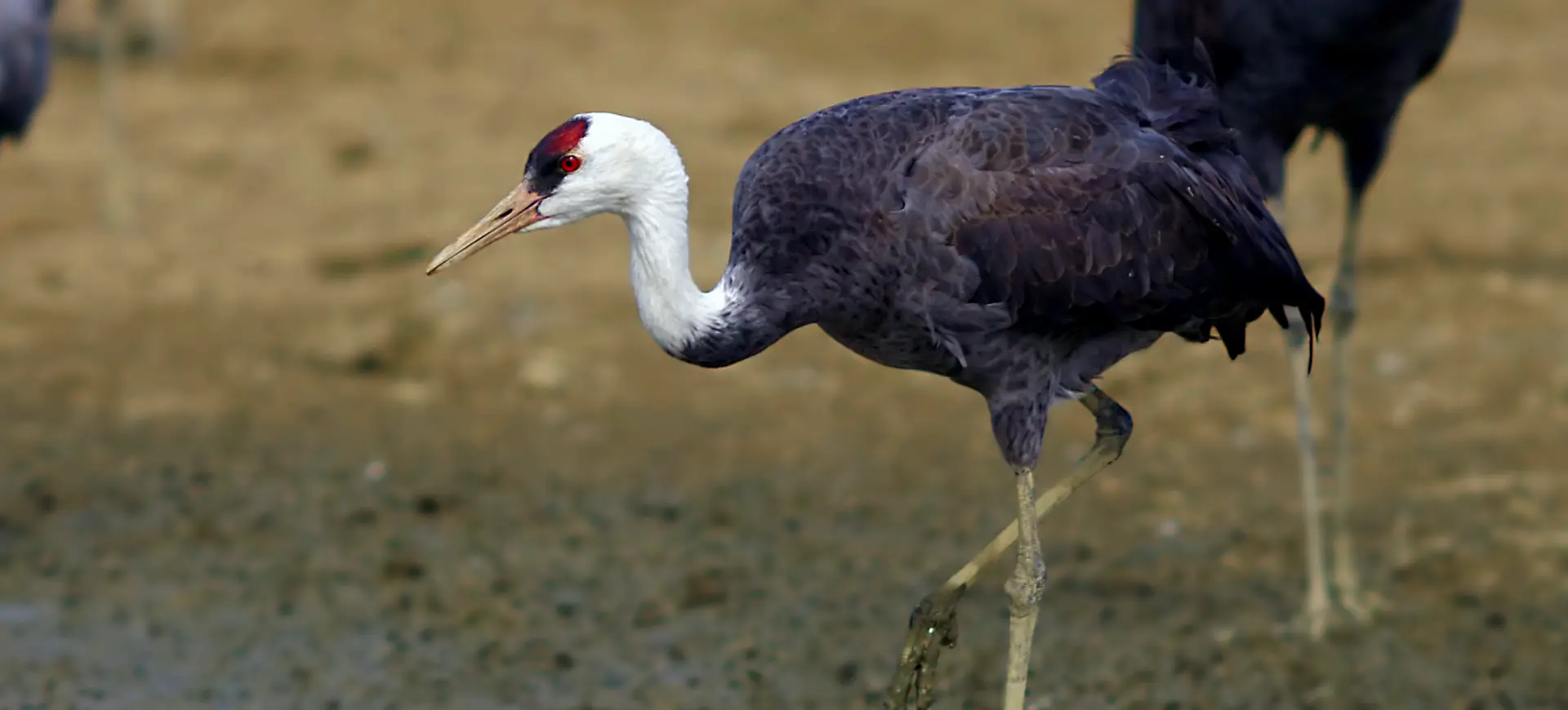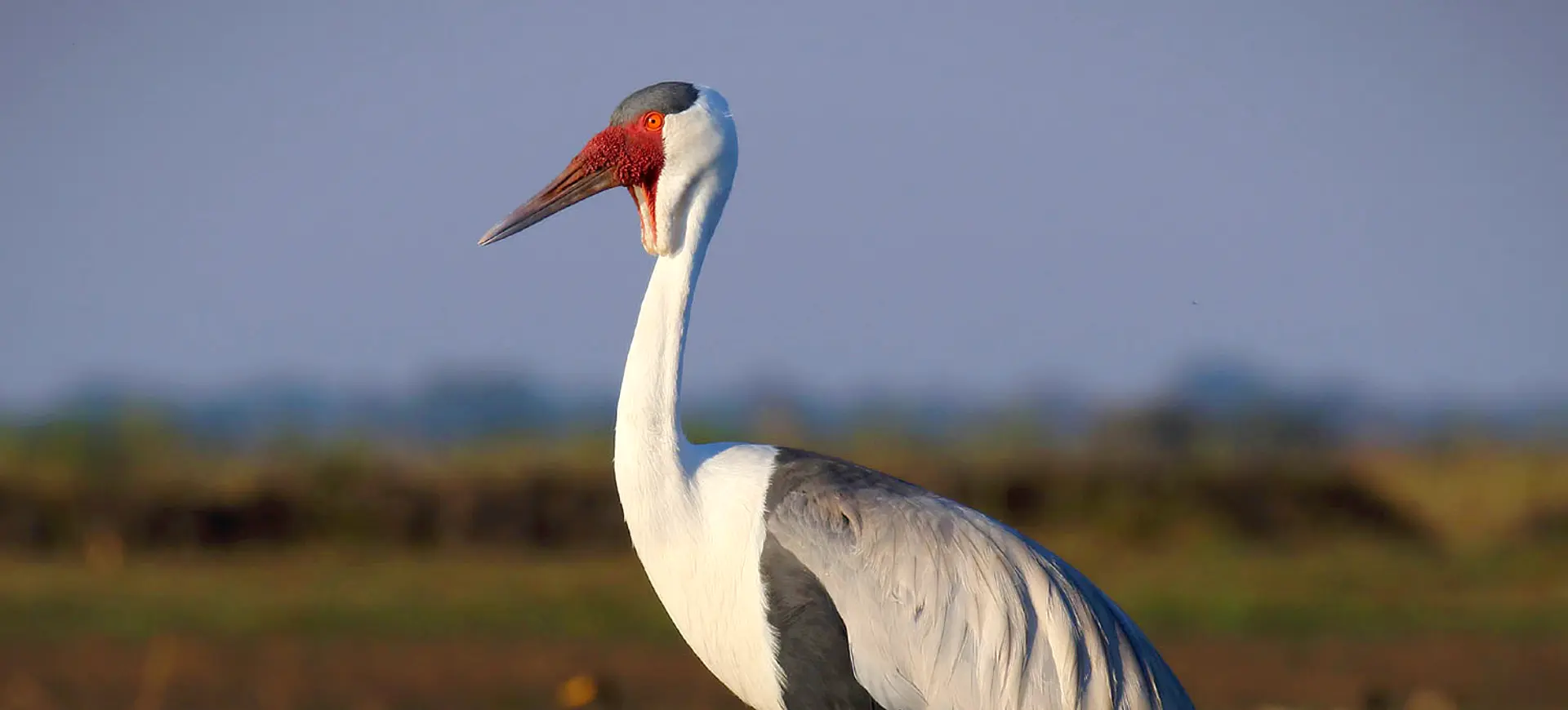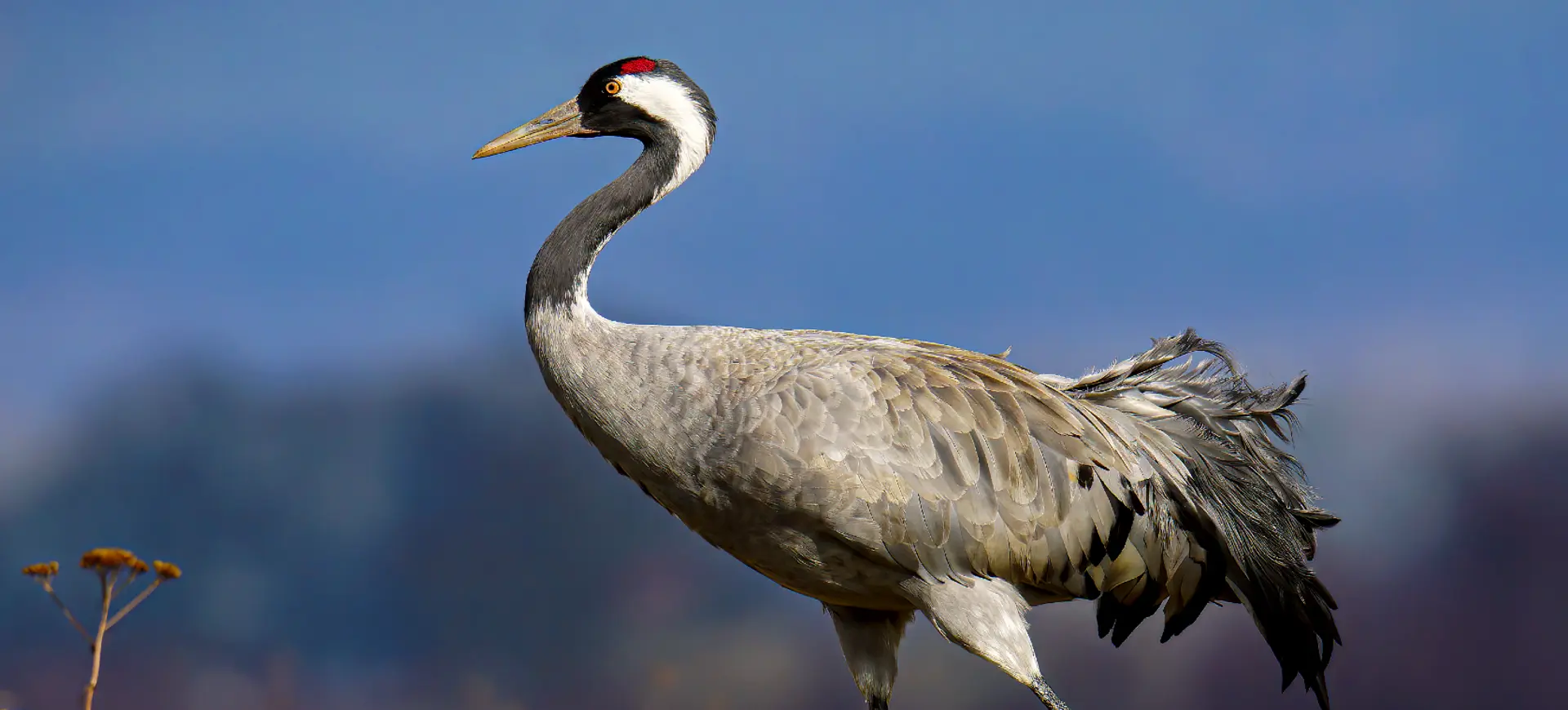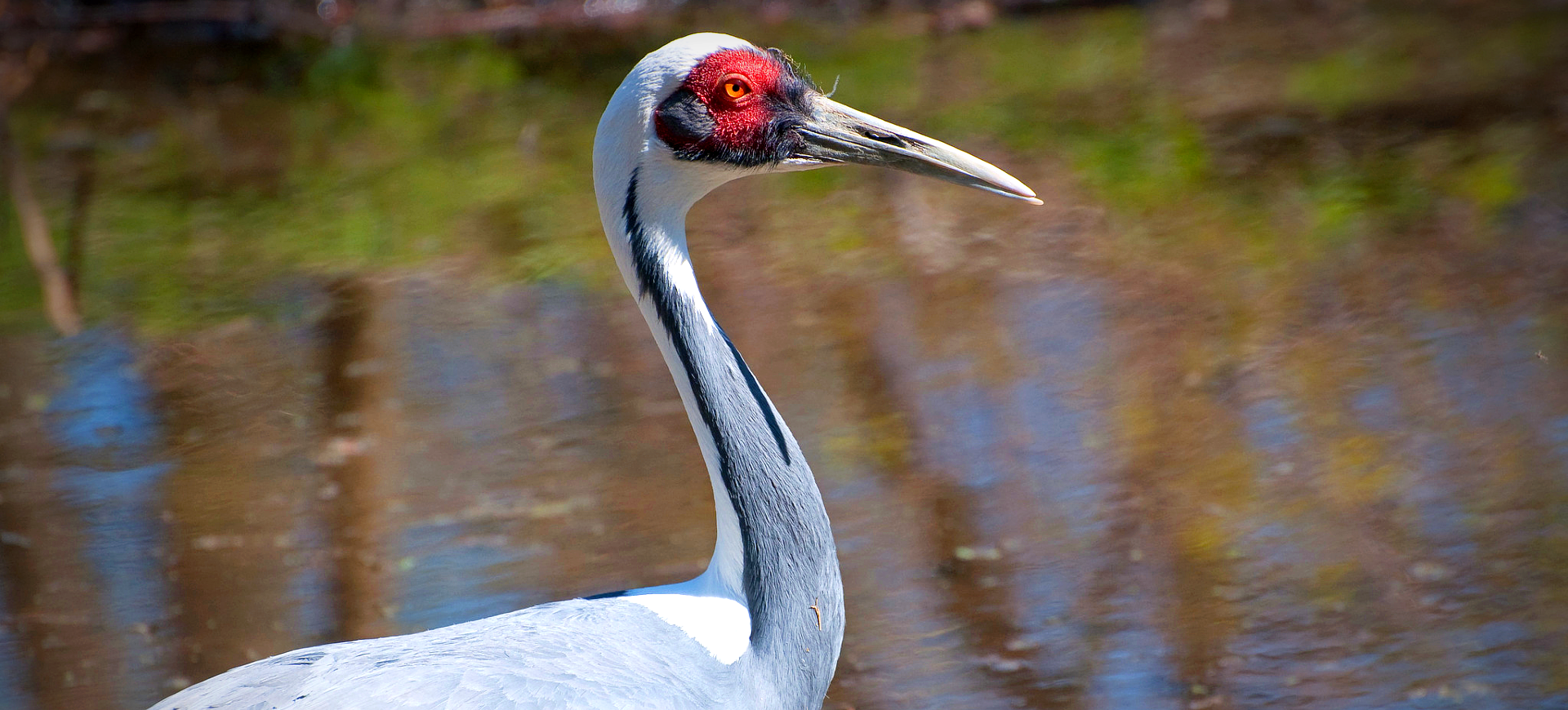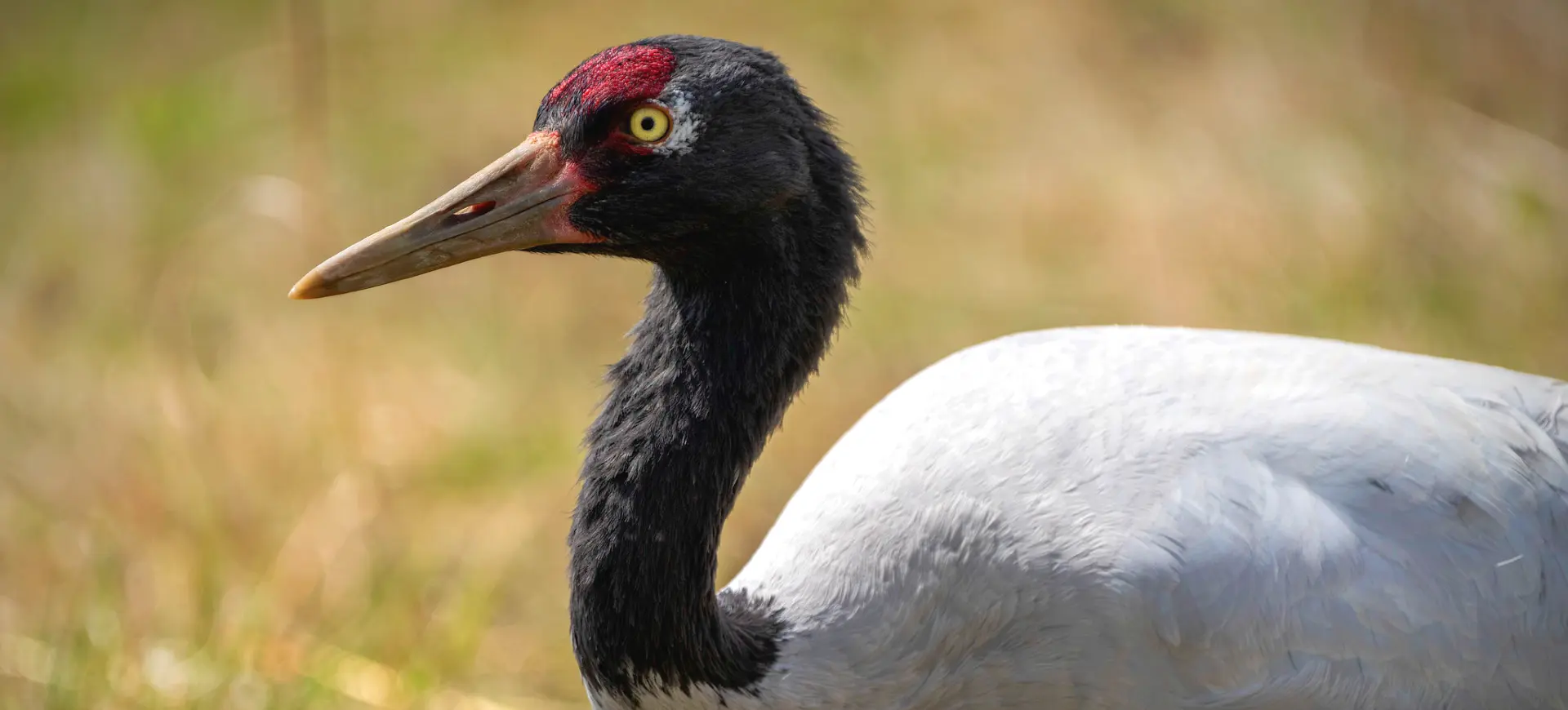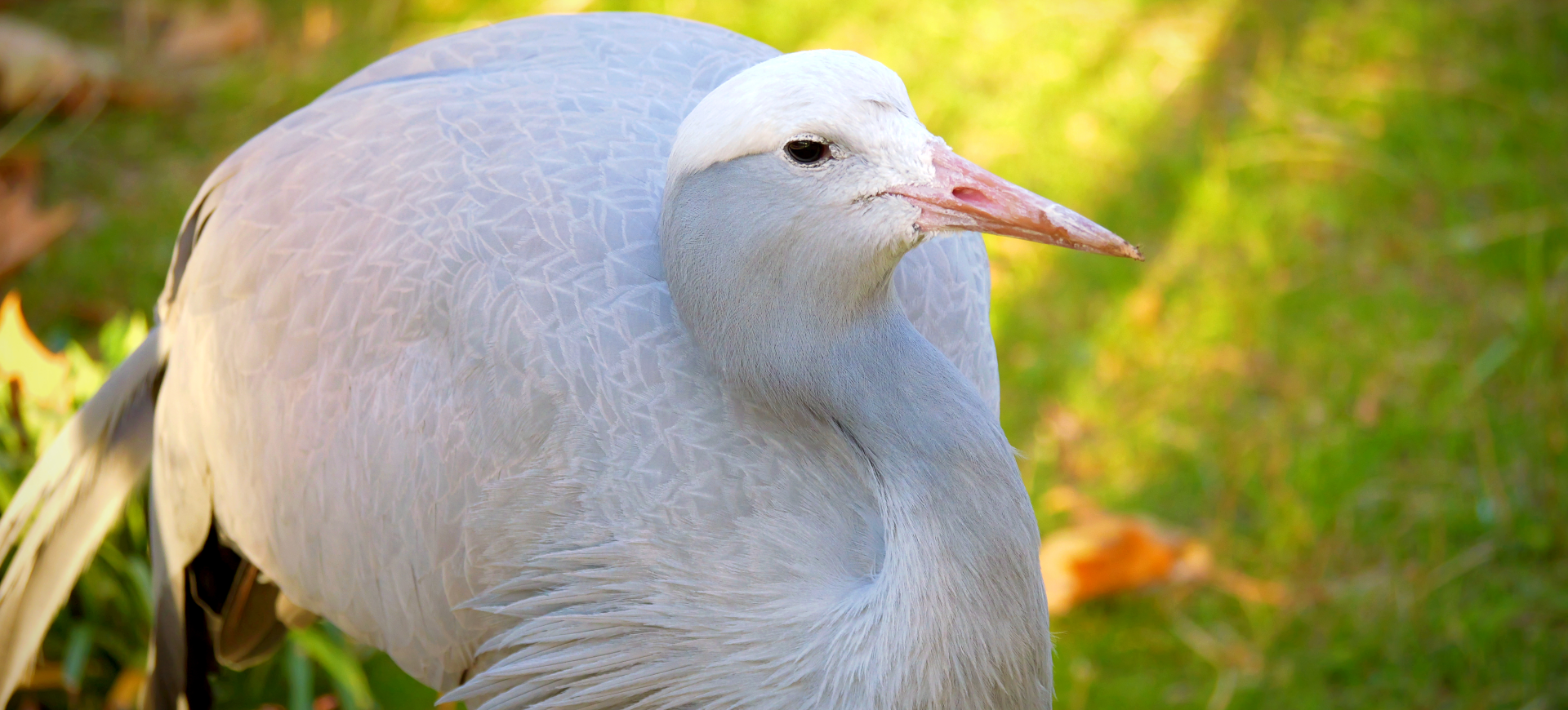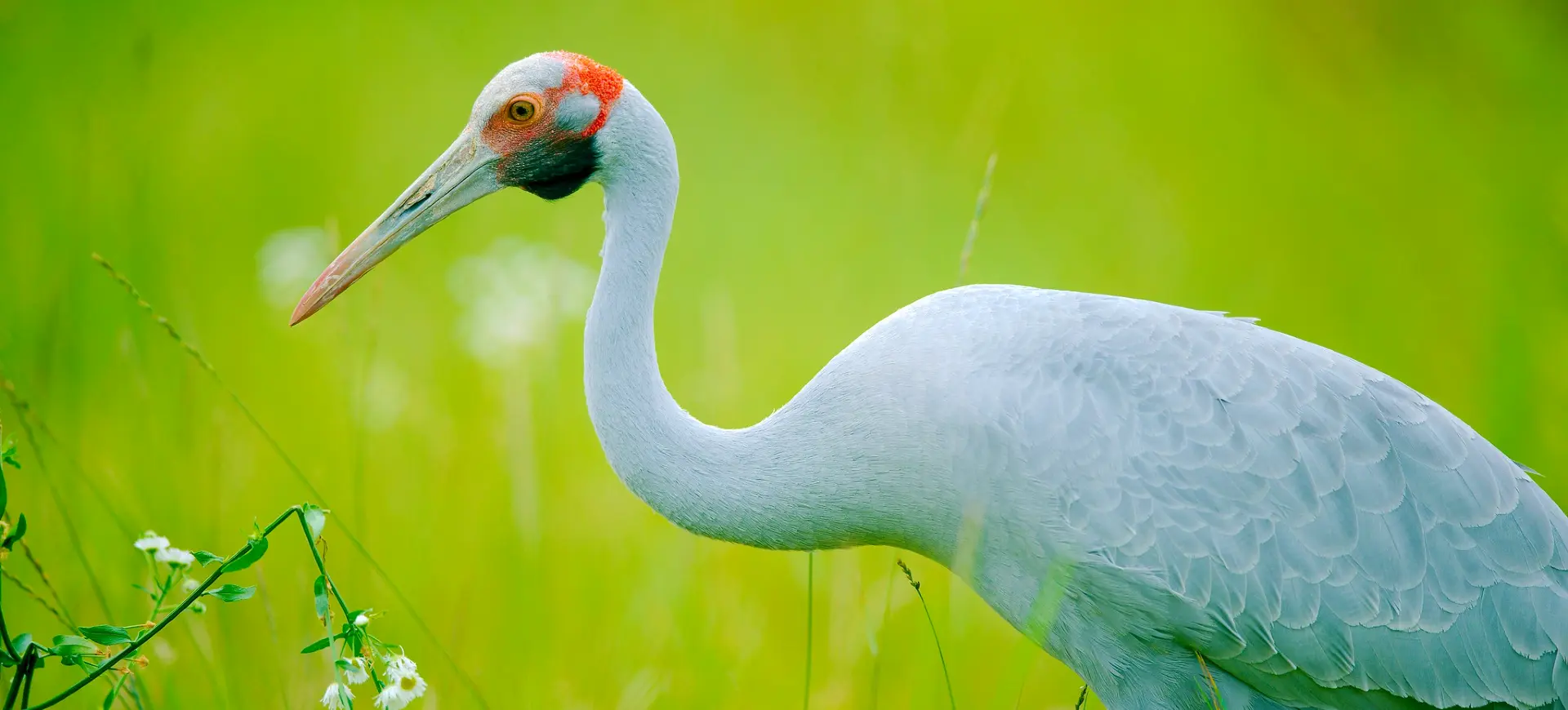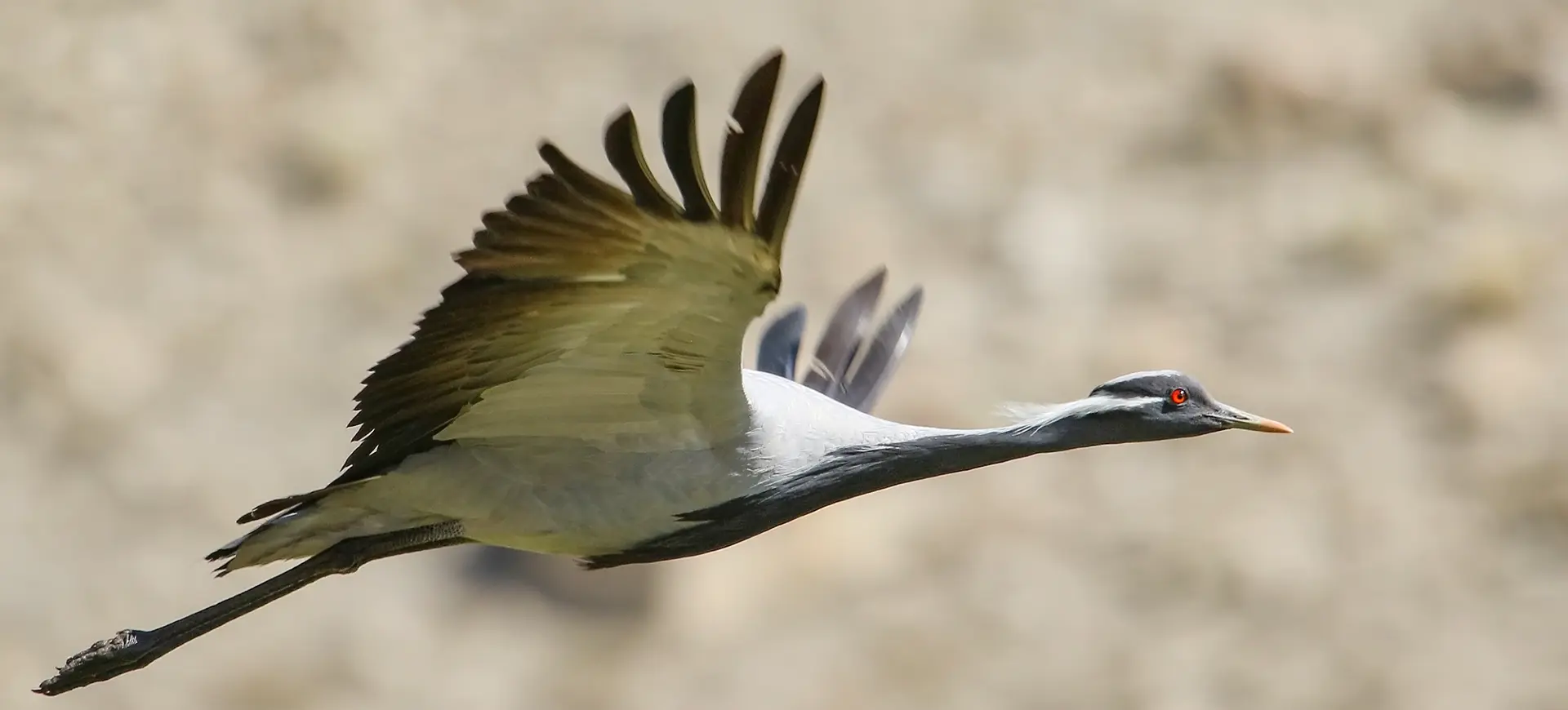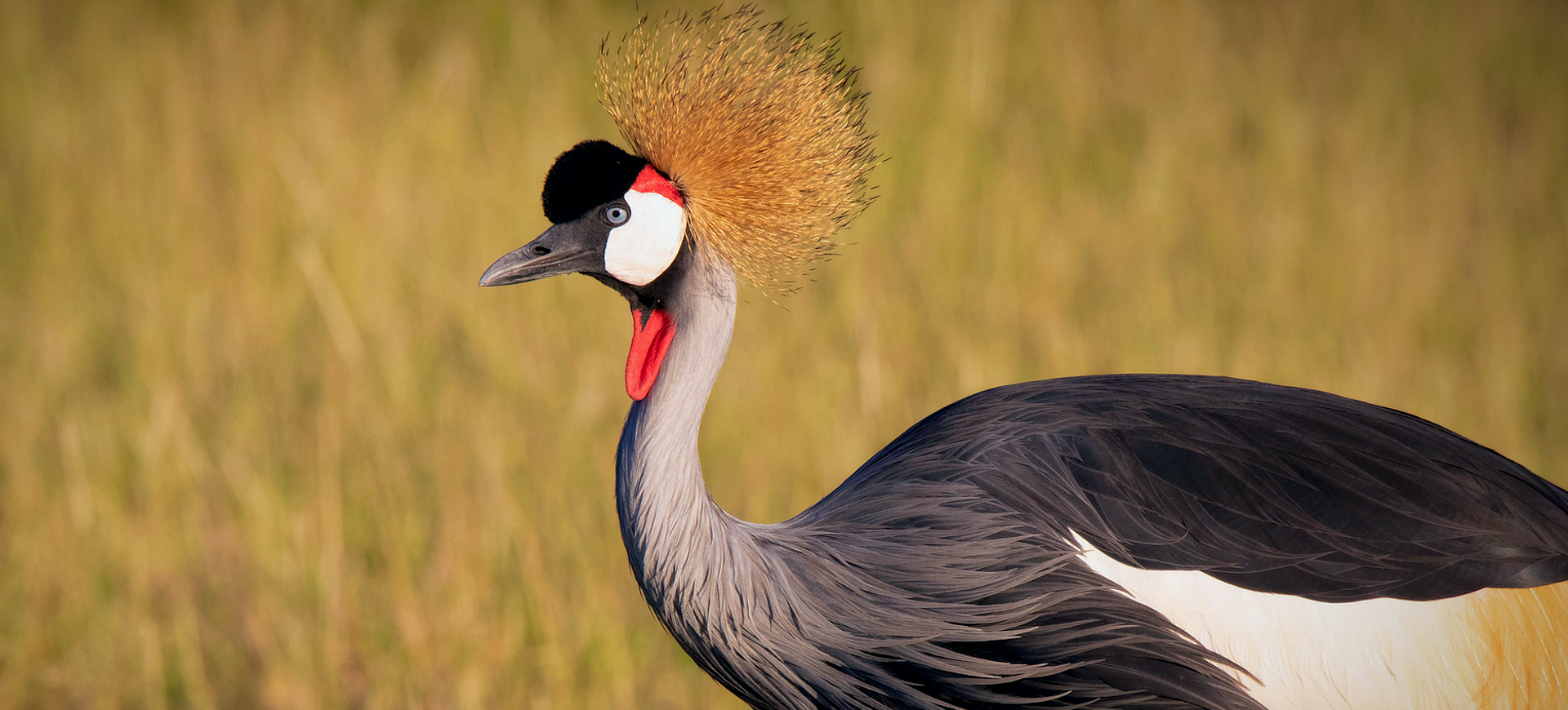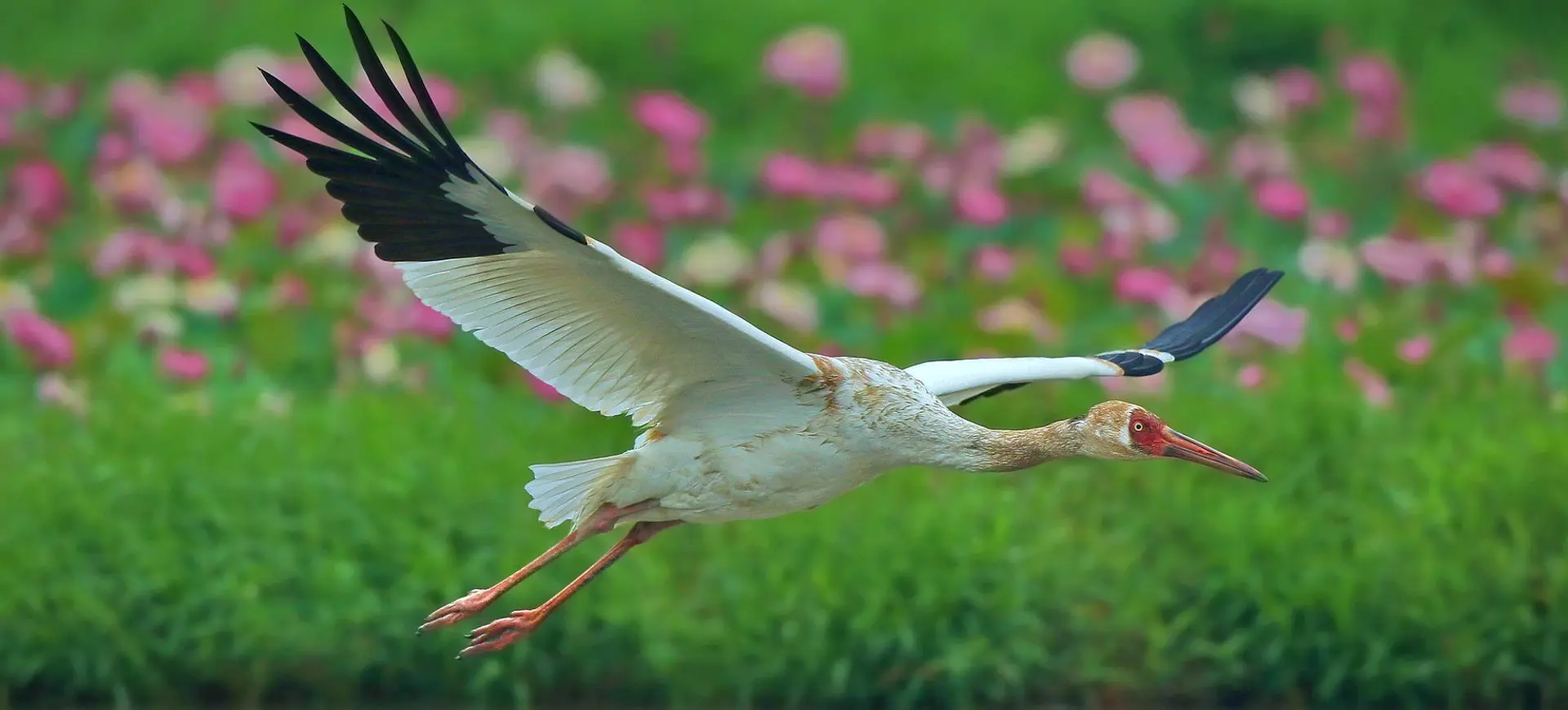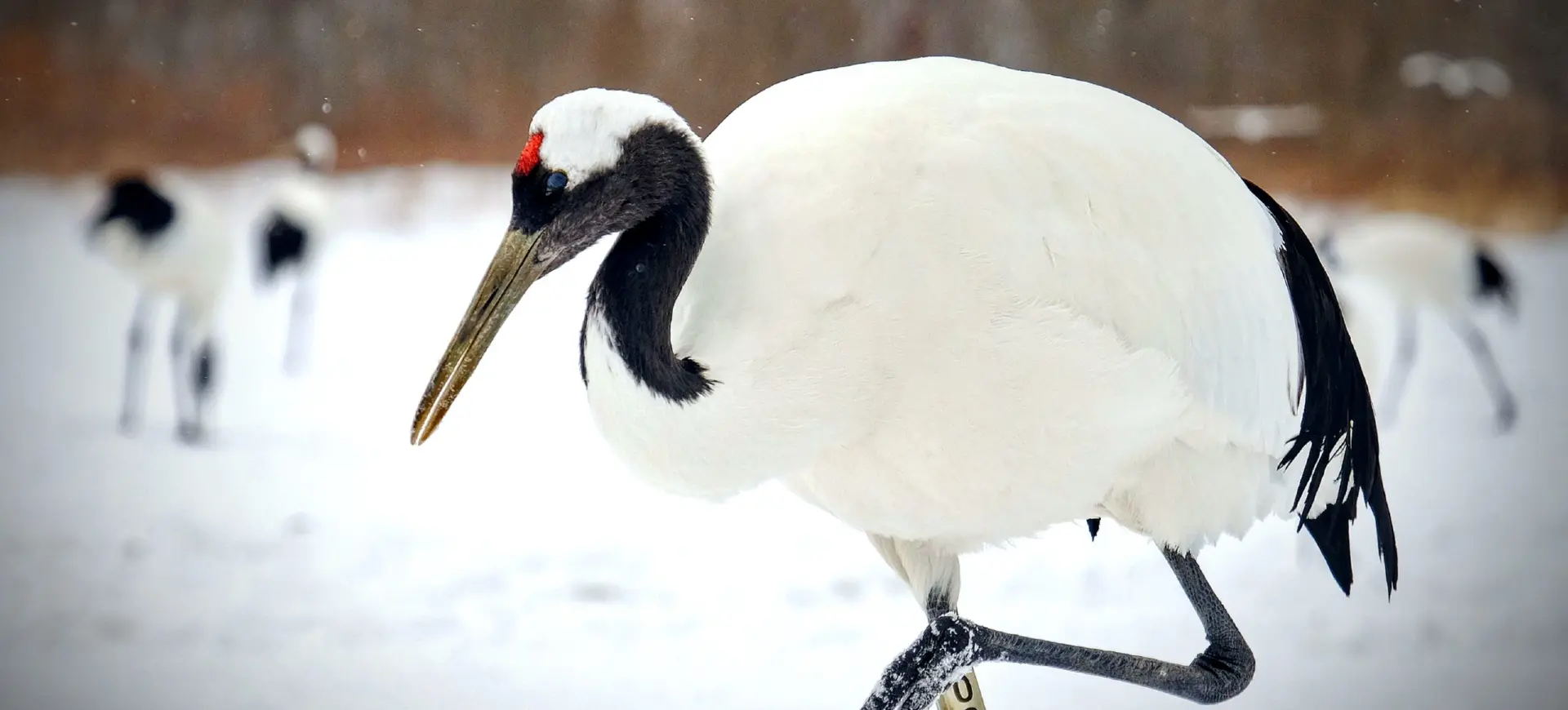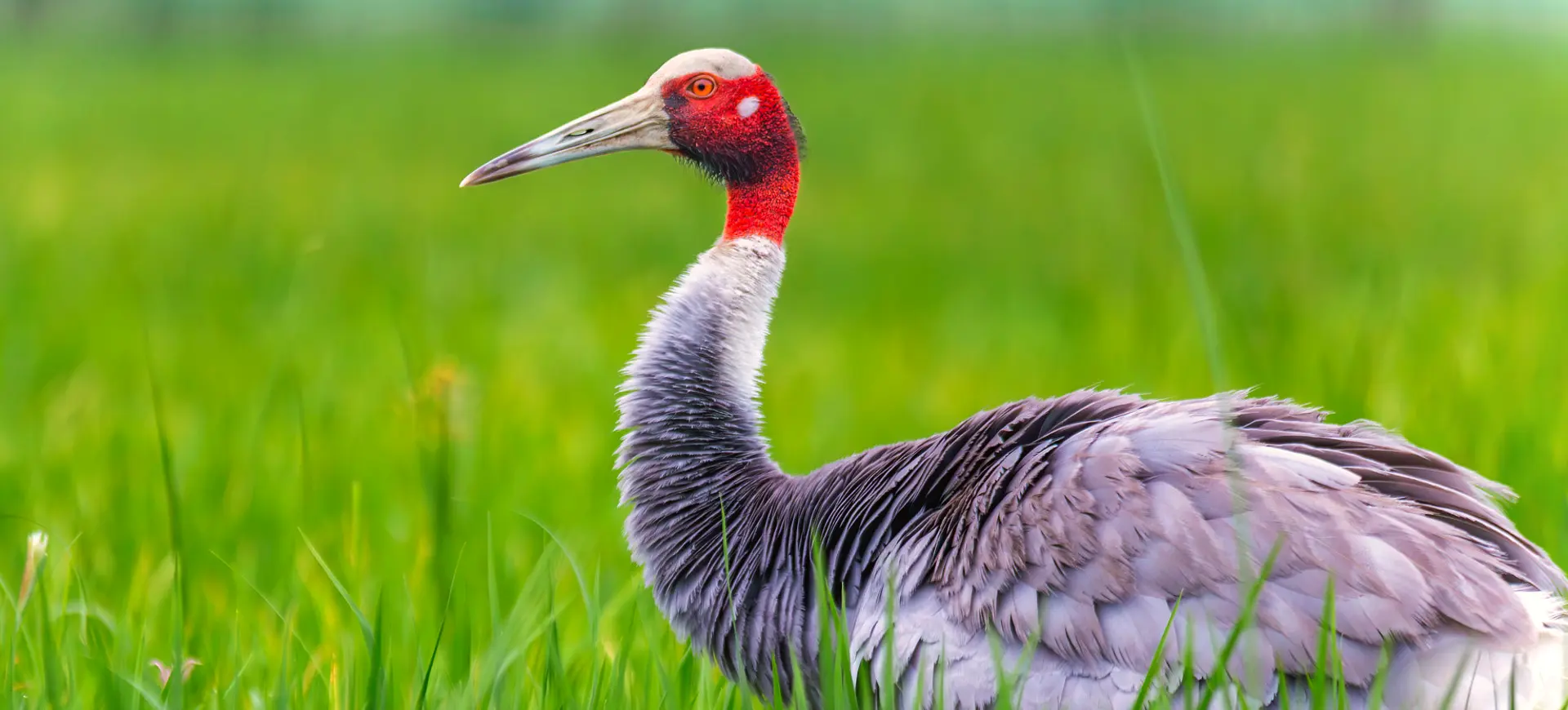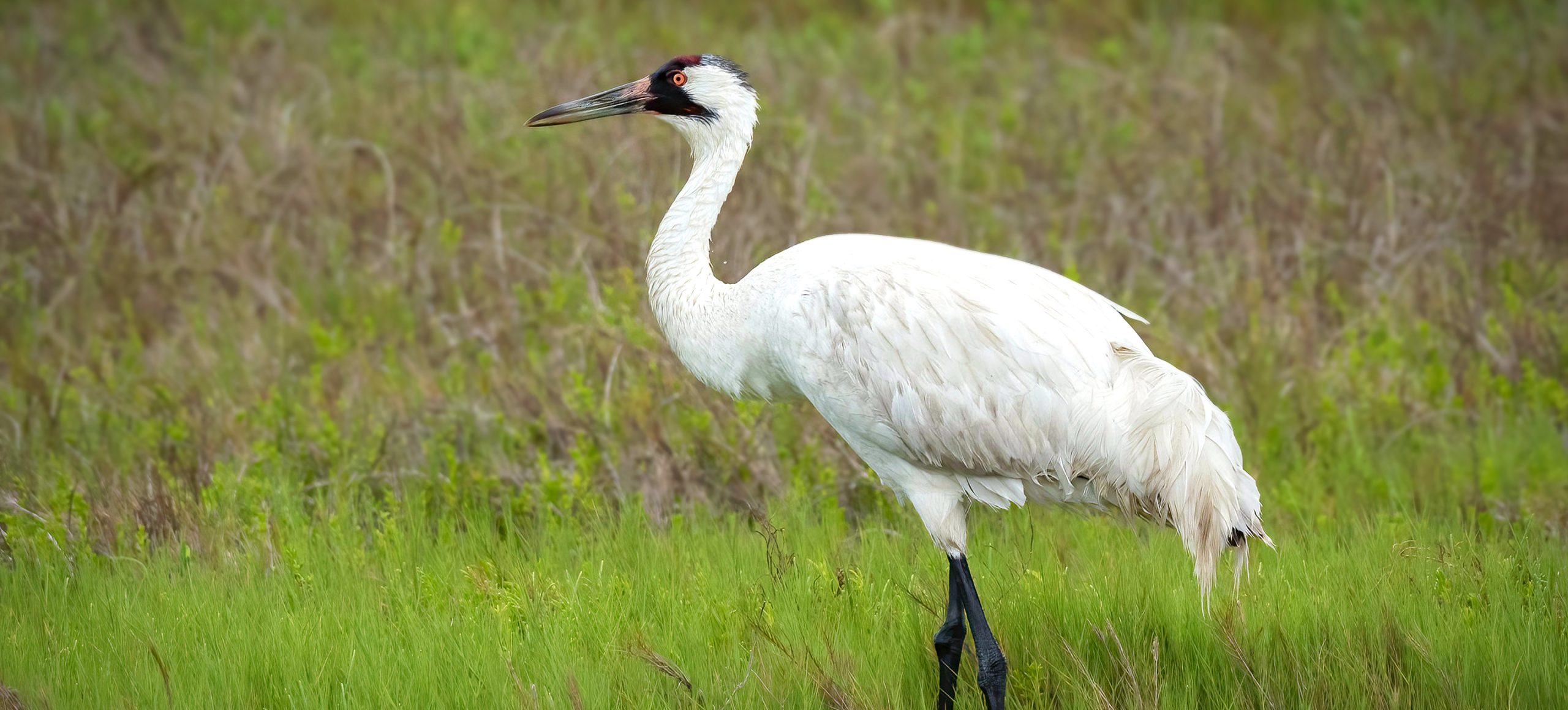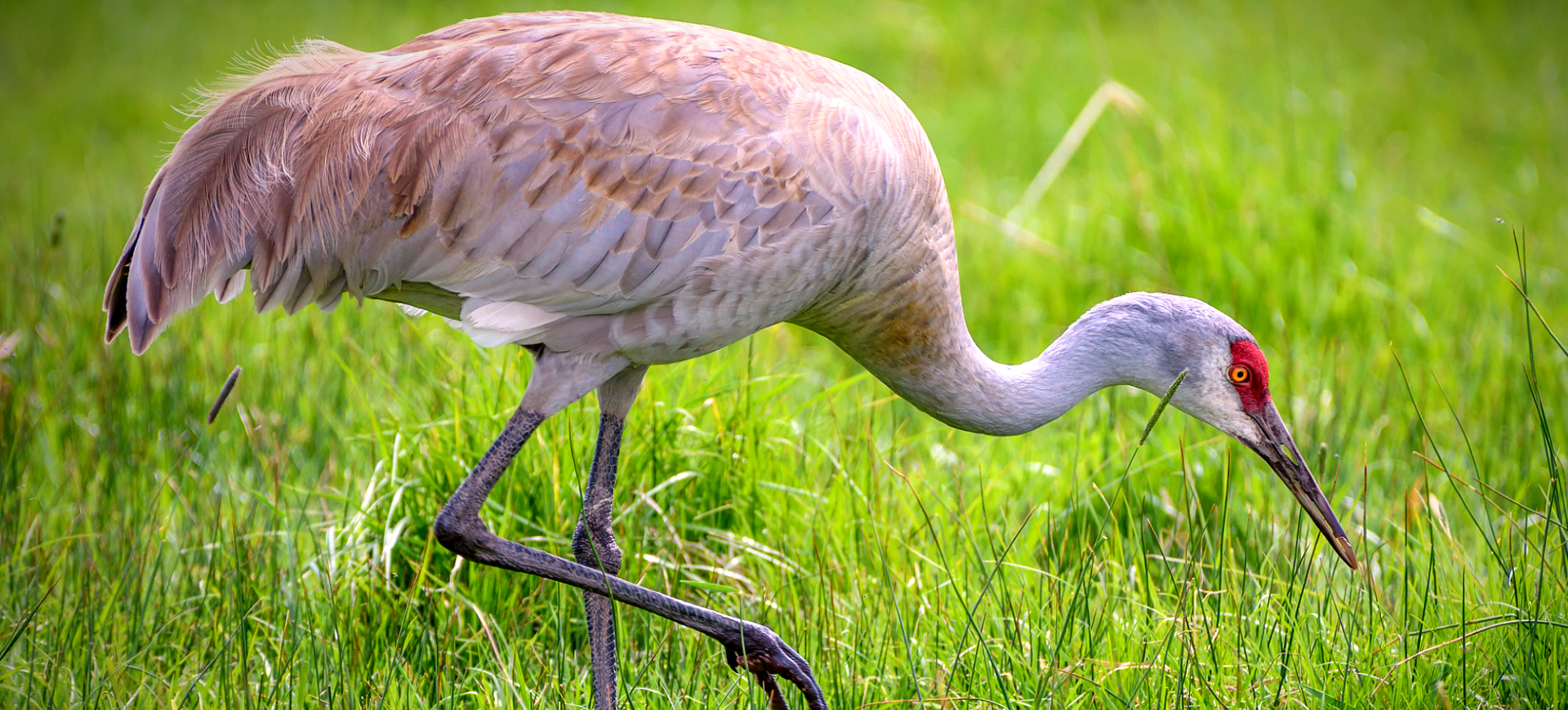Overview
The Black Crowned Crane (Balearica pavonia) is a bird of unmatched grace and beauty, recognized as one of Africa’s most striking birds. With its long legs, neck, and intriguing mix of colors, it provides a distinctive sight against the African landscape. Their bodies are predominantly adorned with black and white feathers, but a crown of stiff golden feathers, a bright white cheek patch, and a dark red throat wattle adds to their unique aesthetic.
As a species of crane, the Black Crowned Crane displays the characteristic grace and elegance of these birds. Known for their complex and mesmerizing dances, these cranes jump, bow, and flap their wings in beautiful displays that serve as courtship rituals and as a way to strengthen pair bonds. They are omnivorous, foraging for food across various environments and feeding on everything from insects and amphibians to seeds and grasses.
The Black Crowned Crane is important in the cultural lore and traditions of the local communities where it’s found. It’s also recognized as a keystone species in its ecosystem, providing essential services that help maintain the ecological balance. Unfortunately, it’s currently under threat due to habitat loss, human disturbance, and other factors, making conservation efforts crucial for its survival.
Taxonomy
Kingdom
Phylum
Class
Order
Family
Genus
Species
Type
Current distribution:
The Black Crowned Crane's range extends across sub-Saharan Africa, with two subspecies occupying distinct regions. The western subspecies (Balearica pavonina pavonina) is found in West Africa, from Senegal and Gambia to Chad and Sudan. The eastern subspecies (Balearica pavonina ceciliae) inhabits Central and East Africa, including parts of South Sudan, Ethiopia, and Uganda. Both subspecies are migratory to some extent, moving locally in response to seasonal changes in water availability.
While the species is still widespread, its distribution is becoming increasingly fragmented due to habitat loss and human encroachment. Populations are concentrated in protected wetlands and reserves, as these areas provide safe nesting and feeding grounds. Outside these protected zones, black crowned cranes are often found in agricultural fields, which can lead to conflict with humans. Conservation efforts aim to maintain habitat connectivity to support their natural migratory patterns.
Physical Description:
Black Crowned Cranes are unmistakable birds due to their striking appearance. They stand about 3 feet tall and have a wingspan of up to 6.5 feet. Their body is primarily grey and white, with black and white wings that are visually striking during flight. A distinguishing feature is their crown of stiff golden feathers, contrasting beautifully with their black neck.
On their face, they have a bare white cheek patch, above which the eye is white and a vibrant red inflatable pouch below it. The bird’s long, dark grey beak is adapted for foraging in wet and dry habitats, and its long legs, colored black in the front and grey in the back, facilitate walking in waterlogged areas.

Lifespan: Wild: ~20 Years || Captivity: ~25 Years

Weight: Male & Female: 7.7-9.0 lbs (3.5-4.1 kg)

Length: Male & Female: 39-43 in (100-110 cm)

Height: Male & Female: 39-43 in (100-110 cm)

Wingspan: Male & Female: 77-79 in (195-200 cm

Top Speed: 25 mph (40 km/h)
Characteristic:
Native Habitat:
Black Crowned Cranes inhabit sub-Saharan Africa’s wetlands, grasslands, and agricultural fields. They are versatile birds, able to inhabit both wet and dry areas, making them less dependent on water bodies than other crane species. They are often found near water bodies such as rivers, lakes, and marshes, as well as in savannas and grasslands.
While they are adaptable to various habitats, these cranes prefer open areas where they can watch for predators. Their nests are typically located in tall grasses or reeds, often in or near wetlands, providing both cover and access to food resources.
Climate Zones:
Biomes:
Biogeographical Realms:
Continents:
Countries:
Diet:
Diet & Feeding Habits:
Black Crowned Cranes are omnivorous, feeding on a wide range of foods. Their diet primarily consists of plant material, including grass seeds, grain, and tubers, but they also consume insects, reptiles, small mammals, and amphibians. The bird’s long beak and neck are specially adapted for probing into the soil and shallow water for food.
During the rainy season, they follow grazing herbivores, exploiting the insects disturbed by these animals’ movements. While foraging, they can often be seen dancing, a behavior believed to flush out hidden prey. When in groups, Black Crowned Cranes are known to form a line and move forward together, flushing out insects and other small creatures as they go.
Mating Behavior:
Mating Description:
Black Crowned Cranes are monogamous birds, forming bonds that last for life. Their mating season corresponds with the region’s rainy season, typically once or twice a year, depending on the location. During this time, males engage in a courtship dance involving bowing, jumping, running, wing flapping, and even tossing small objects into the air to attract females.
Once a pair is formed, they construct their nest together. The nest is usually built in or near a wetland, marsh, or river and comprises collected vegetation. Following copulation, the female lays about 2 to 5 eggs, which both parents take turns incubating. After a gestation period of around 30 days, the chicks hatch. They are precocial and are capable of leaving the nest and feeding themselves shortly after hatching, but both parents care for and protect them until they are independent.
Reproduction Season:
Birth Type:
Pregnancy Duration:
Female Name:
Male Name:
Baby Name:
Social Structure Description:
Black Crowned Cranes live in pairs or small family groups outside of the breeding season but can form larger flocks in areas with abundant resources. Pairs are monogamous and maintain long-term bonds. Both males and females participate in raising the young. During courtship, pairs perform a complex display of dancing and calling, strengthening their bond.
Despite their social nature, Black Crowned Cranes are also territorial, especially during the breeding season. The male plays a significant role in defending the territory from intruders. He will display a variety of threatening postures and vocalizations to deter potential threats.
Groups:
Conservation Status:
Population Trend:
The Black Crowned Crane population is widely distributed but sparsely populated across its range. The total population is estimated to be less than 74,000 individuals, but it has declined due to various threats. The two recognized subspecies show different trends; while the West African Black Crowned Crane’s population is slightly stable or increasing, the Sudan Crowned Crane’s population is rapidly declining.
The cranes’ population density can vary significantly based on habitat quality and food availability. They are usually found in low densities but can occur in large numbers in suitable wetland habitats, especially during the dry season when these areas provide essential resources. Migratory behavior is not typical for this species; they tend to stay within a relatively small range unless forced to move due to habitat changes or food scarcity.
Population Threats:
The major threats to the Black Crowned Crane population include habitat loss and degradation, hunting, and capture for the pet trade. Rapid human population growth and agricultural expansion have led to significant loss and fragmentation of their habitats. Wetlands, crucial for the cranes’ breeding and roosting, are being drained for agriculture or impacted by pollution and water abstraction.
Hunting poses another significant threat. The cranes are hunted for their meat and feathers, used in local rituals and ceremonies. The illegal pet trade also impacts the population; young chicks are often taken from the wild to be sold as pets. Although these activities are illegal in many countries within the cranes’ range, enforcement of these laws is often weak.
Conservation Efforts:
The Black Crowned Crane is protected under the Agreement on the Conservation of African-Eurasian Migratory Waterbirds (AEWA), which calls for member states to engage in various conservation actions. These include habitat conservation and restoration, management of human activities, research and monitoring, education and awareness-raising, and implementation and enforcement of laws.
In addition to international agreements, several national and local conservation initiatives have been undertaken to protect the species. Community-based conservation projects are crucial, as they protect the species and its habitat and involve and benefit local communities. Environmental education programs, especially those targeting young people, are essential to increase awareness about the importance of cranes and their habitats.
Additional Resources:
Fun Facts
- The Black Crowned Crane is the national bird of Nigeria.
- Unlike many other crane species, Black Crowned Cranes can roost in trees, thanks to their long hind toe which allows them to grasp branches.
- The “crown” of the Black Crowned Crane isn’t just for show – it helps the bird blend in with its grassy surroundings.
- They are known for their elaborate mating dance, including bowing, jumping, and flapping.
- Black Crowned Cranes play an important role in their ecosystem by controlling pests and dispersing seeds through their droppings.
- These cranes have a wide range of vocalizations, each with different meanings.
- Their red cheek patches are not made of feathers but are actually areas of bare skin.
- The Black Crowned Crane is one of only two crane species that can nest in both wet and dry environments.
- They are a symbol of wealth and longevity in many African cultures.
- Despite being the smallest species of crane, the Black Crowned Crane still stands nearly 3 feet tall and has a wingspan of over 6 feet.


